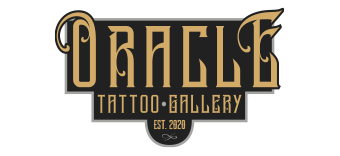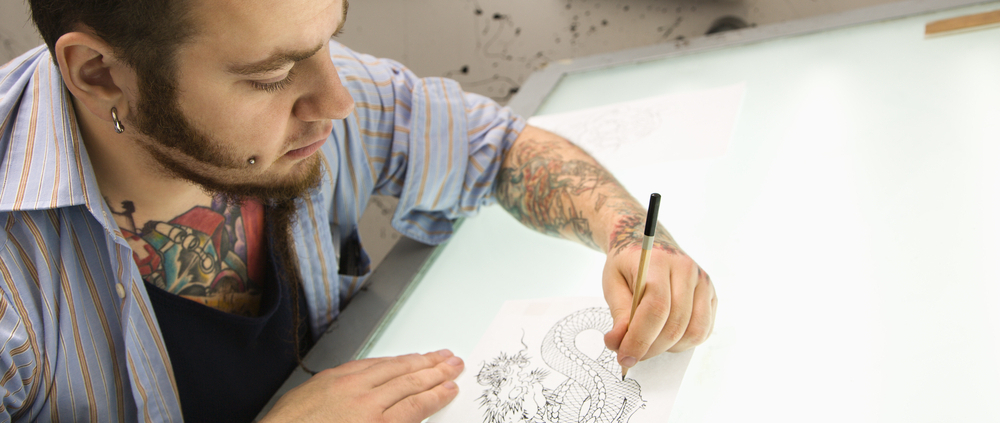From Sketch to Skin: The Journey of Custom Tattoo Designs
Many types of tattoos exist, but the ones people seek to get are the custom designs. Custom tattoos represent a balance of your vision and an artist’s expertise. Your idea is brought to life, making the tattoo meaningful. The journey towards receiving a custom tattoo design is a bit different from that of receiving a flash tattoo. So, let’s dive into the process, giving you insight into how ink masterpieces are created.
Key Takeaways
- Personalized, unique designs crafted for individual clients, reflecting their narratives and beliefs, and holding deep personal significance.
- Custom vs. Flash Tattoos: Custom tattoos are exclusive to the individual, while flash tattoos are pre-designed and readily available, often featuring simpler, traditional motifs for quick application.
- A comprehensive exchange between the client and the artist, fostering a thorough understanding of the client’s vision and paving the way for a unique and personalized design.
- Concept to Design: The artist translates the client’s vision into a design, adjusting complexity as needed to ensure coherence and suitability for the body’s contours.
- Stencils and Prepping: Finalized designs are transferred to the skin through stencils or freehand drawings, offering adaptability and flexibility for organic and fluid designs.
What is a Custom Tattoo?
A custom tattoo is a personalized and unique design created specifically for an individual by a tattoo artist. Since a custom tattoo is made solely for you, it is a one-of-a-kind piece. Because custom tattoos are designed with your narrative, belief, and aesthetic in mind, these tattoos often hold a deep meaning or significance.
How Does a Custom Tattoo Differ From a Flash Tattoo?
As mentioned above, custom tattoos are personally created for you. They are unique and will not be replicated on someone else. On the other hand, a flash tattoo refers to a pre-designed tattoo typically displayed on the walls or in portfolios of a tattoo studio. These designs are often readily available for clients to choose from without any alterations or personalization. Flash tattoos are usually simpler in nature and are more commonly associated with popular or traditional tattoo motifs, such as anchors, roses, or hearts.
They are often chosen for their immediate availability and can be applied quickly, making them a popular choice for those seeking a spontaneous or simpler tattoo experience.
The Consultation
The process of getting a custom tattoo begins with an in-depth consultation between the client and the artist. This initial meeting serves as a platform for clients to articulate their ideas, preferences, and aspirations for the tattoo. Through a thoughtful exchange of ideas and concepts, the artist gains a comprehensive understanding of the client’s vision, enabling them to translate it into a unique and personalized design.
For the consultation, it is especially helpful if you can bring reference images or come armed with stories.
From Concept to Design
With an understanding of your vision, the tattoo artist gets to work crafting a design that embodies everything you provided. The sketching process can take as little as a couple of minutes to a few days, depending on the artist. Other factors, like the style of the tattoo, also come into consideration. In some cases, complex designs may undergo simplification to ensure that the final tattoo retains its clarity and coherence, seamlessly adapting to the contours of your body.
Stencils and Prepping
Your design is finalized. Now, it is time for your appointment and, more importantly, the stencil. The stencil may be created using a printer and transfer paper. The stencil perfectly mirrors your tattoo. Your skin will be prepped—as in cleaned and shaved—before the stencil is applied. You will have a moment to decide how the stencil looks or if you want it slightly adjusted.
In the event your custom tattoo is a freehand design, this process may look a little different. Rather than there being a sketch, the artist will draw the design on your skin with a marker. This method grants the artist greater creative liberty and enables them to tailor the design to the client’s body shape and contours in real-time.
Freehand designs are particularly beneficial for clients seeking more organic and fluid tattoos. Artists proficient in this technique can adapt the design to suit the client’s preferences and the unique characteristics of their body, ensuring that the tattoo complements their natural curves and musculature. While freehand designs offer a greater degree of flexibility and adaptability, they also require a high level of skill and confidence on the part of the artist.
Getting Tattooed
With your stencil in place, it is time for the design to be etched into your skin. As you listen to the thrum of the tattoo machine, your custom design comes to life. Depending on the size and complexity of the design, your tattoo session make take a few hours or days to complete.
Once your tattoo is finished, be sure to follow the aftercare instructions implicitly. Doing so ensures that your custom tattoo stays vivid and sharp and heals correctly. With that, the journey is complete (and you will most likely want to start on another).
Looking for a Custom Tattoo in Philadelphia?
Ultimately, the process of obtaining a custom tattoo represents more than just a mere transaction. It symbolizes a collaborative journey between the artist and the client, transforming artistic visions into a tangible, meaningful reality. From the initial consultation to the final tattoo session, the experience is one that celebrates personal expression and storytelling. If you’re looking to embark on a similar creative voyage, consider exploring the world of custom tattoos at Oracle Tattoo Gallery in Philadelphia. Our dedicated team of artists is committed to bringing your unique ideas to life and creating an enduring work of art that reflects your individuality and style.
Schedule your consultation today by calling 215-638-1601 or by filling out the consultation form.



